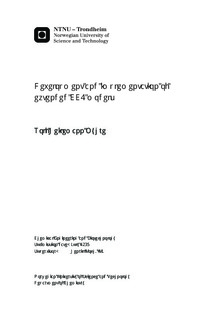| dc.description.abstract | This thesis is part of an ongoing research project into the development and implementation of multi-level coupled cluster (MLCC) theory. In MLCC, the orbital space is divided into two or more subspaces. Based on which subspace the involved orbitals belong to, the excitation operators in the cluster operator are separated into different cluster operators. The different cluster operators can then be treated with different levels of coupled cluster (CC) theory.In Cholesky decomposition, a positive semi-definite matrix is decomposed into a lower triangular matrix and its transpose. For sparse, diagonally dominant matrices, this decomposition is very efficient. The one-electron density matrix in the atomic orbital basis is both positive semi-definite, diagonally dominant and sparse and the Cholesky vectors obtained by decomposing it are equivalent to a local molecular orbital (MO) parametrisation. The diagonal elements of the density matrix corresponds to atomic orbitals centred on atoms and a local active space can be obtained by defining a set of atoms as active.Pilot code for the total energy and excitation energies has been implemented for the MLCC model extended CC2 (ECC2) in the software package DALTON. In ECC2, the orbitals are divided into two subspaces and the two parts of the cluster operator are treated with CC2 or CCSD. Singularities encountered by CC2 during dissociation processes were avoided by including HOMO and LUMO in the active CCSD space for ECC2. Using a localised active space, ECC2 reproduced the CCSD dissociation energy within chemical accuracy for ethene. ECC2 also improved dipole moments and polarisabilities in cases were CC2 performed poorly compared to CCSD.Excitation energies were calculated with CCSD accuracy using ECC2 and local active spaces. However, this requires careful assignment of the active atoms and worked best when all orbitals involved in the excitations were part of the active space.By implementing a space described by SCF far from the active space, the calculations will scale linearly with system size for molecular systems above a certain size because electron correlation is only calculated for a fixed active part. By using Cholesky decomposition to generate an auxiliary basis for the MO integral calculation, it should be possible to implement a model with size-intensive complexity that can compete with DFT in scaling for large systems. | nb_NO |

